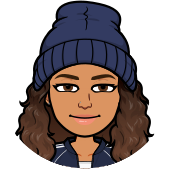Natural selection and genetic modification
Cards (51)
- What does natural selection mean?
- Why do individuals in a population show genetic variation?
- How do new alleles arise?
- What happens to alleles responsible for useful characteristics?
- How do beneficial characteristics affect a population over time?
- What do bacteria sometimes develop in their DNA?
- What advantage does antibiotic resistance provide to bacteria?
- How does a resistant bacterium fare in a treated host?
- What does the spread of antibiotic resistance illustrate?
- What is a fossil?
- How are fossils typically found?
- What does arranging fossils in chronological order show?
- What is the significance of fossils in evolution?
- What do fossils suggest about human evolution?
- What are hominids?
- What do hominid fossils reveal?
- How old is the Ardi fossil?
- What does Ardi's foot structure suggest?
- How does Ardi's brain size compare to a chimpanzee's?
- How old is the Lucy fossil?
- What features does Lucy have?
- How does Lucy's foot structure differ from Ardi's?
- Who organized the expedition to find hominid fossils in 1964?
- What was Turkana Boy's age?
- How does Turkana Boy's brain size compare to Lucy's?
- How can fossils be arranged to show human evolution?
- What evidence do stone tools provide for human evolution?
- What is stratigraphy?
- How can carbon-14 dating be used?
- What are the five kingdoms in the traditional classification system?
- How has the classification system changed over time?
- Who proposed the three domain system of classification?
- What are the three domains proposed by Woese?
- What is a disadvantage of selective breeding?
- What health problems can arise from inbreeding?
- What is selective breeding?
- What are the steps involved in selective breeding?
- How can genetic engineering be useful in agriculture?
- What is recombinant DNA?
- What role do restriction enzymes play in genetic engineering?
